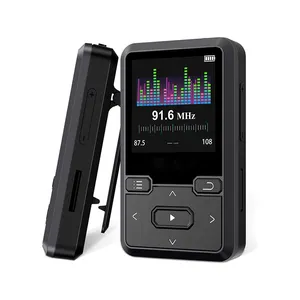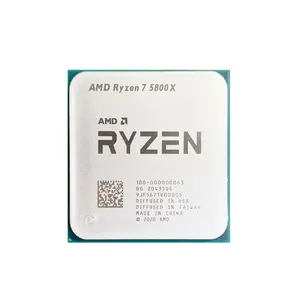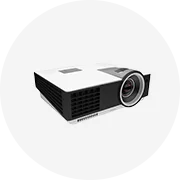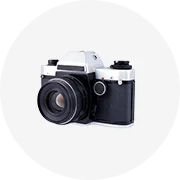Phổ biến trong ngành của bạn

3MP 12 inch màn hình âm thanh hai chiều trong nhà và ngoài trời giám sát CCTV wifi không dây NVR Kit Hệ thống camera an ninh tầm nhìn ban đêm
506,95 ₪ - 544,78 ₪
Đơn hàng tối thiểu: 1 Bộ
Vận chuyển mỗi chiếc: 136,28 ₪


Camera Chụp Ảnh Nhiệt Hồng Ngoại Giá Camera Chụp Ảnh Nhiệt Cầm Tay
749,08 ₪ - 862,57 ₪
Đơn hàng tối thiểu: 10 Cái
Vận chuyển mỗi chiếc: 71,70 ₪


Hiseeu 4MP tầm nhìn ban đêm cảm biến chuyển động an ninh nhà Hệ thống camera không dây NVR ghi CCTV Camera Set Wifi H.265 4CH máy ảnh
Sẵn sàng vận chuyển
71,89 ₪ - 374,54 ₪
Đơn hàng tối thiểu: 2 Bộ
Vận chuyển mỗi chiếc: 92,73 ₪


Thiết Bị Quan Sát Ban Đêm Chụp Ảnh Nhiệt Cầm Tay
749,08 ₪ - 862,57 ₪
Đơn hàng tối thiểu: 10 Cái
Vận chuyển mỗi chiếc: 71,70 ₪


USB góc rộng với microphone 1080P hỗ trợ ánh sáng hồng ngoại MJPG YUV tầm nhìn ban đêm ghi ov2735 USB Mô-đun máy ảnh
53,46 ₪ - 59,06 ₪
Đơn hàng tối thiểu: 5 Cái
Vận chuyển mỗi chiếc: 22,89 ₪


Sony CCD 700tvl Chống Thấm Nước Cho Xe Sony Chiếu Hậu Camara Bên Ngoài Gương Van Phía Sau Camera Quan Sát
92,69 ₪ - 100,26 ₪
Đơn hàng tối thiểu: 2 Cái

Camera Quan Sát Ban Đêm Laser, Camera Hồng Ngoại Có Độ Phân Giải Cao Xem Qua Kính Xe Quay
6.809,75 ₪ - 7.566,39 ₪
Đơn hàng tối thiểu: 2 Đơn vị
Vận chuyển mỗi chiếc: 412,75 ₪

2.4G/5G dual wifi 1080p icsee tuya máy ảnh bệnh nhân P2P an ninh máy ảnh độ nét cao FHD không dây thông minh Nhà tuya Wifi máy ảnh
32,12 ₪
Đơn hàng tối thiểu: 100 Cái
Vận chuyển mỗi chiếc: 28,72 ₪


OEM chuyển động theo dõi ánh sáng nhỏ bóng đèn Camera de giám sát Wifi P2P máy ảnh trong nhà OEM ODM mini LED phát hiện chuyển động Yi IOT 128G
Sẵn sàng vận chuyển
30,27 ₪ - 34,05 ₪
Đơn hàng tối thiểu: 1 Cái
Vận chuyển mỗi chiếc: 35,19 ₪

Jortaniip camera hai chiều audiohd 1080P Camera Camera an ninh ngoài trời báo động không dây cảm biến chuyển động nhà 2MP đám mây Camera H.265
189,13 ₪ - 218,90 ₪
Đơn hàng tối thiểu: 2 Cái
Vận chuyển mỗi chiếc: 157,76 ₪

Máy Quay PTZ Wifi Ống Kính Kép Độ Phân Giải Cao PTZ Góc Nhìn 355 Độ Lưu Trữ Cục Bộ/Đám Mây Cảm Biến Kép Radar
427,51 ₪ - 495,60 ₪
Đơn hàng tối thiểu: 5 Cái
Vận chuyển mỗi chiếc: 74,23 ₪
Các tìm kiếm liên quan:
máy ảnh hồng ngoại 420tvlcamera hồng ngoại ccd chuyên nghiệpcamera hồng ngoại varifocal 50msony 480tvl camera hồng ngoại4 ir hồng ngoại wearable cameracamera hồng ngoại ccd không thấm nướccamera hồng ngoại sony effiomáy ảnh hồng ngoại 800tvlgiá máy ảnh hồng ngoại 50mcamera hồng ngoại ip66hồng ngoại không thấm nước 420tvl máy ảnhmáy ảnh hồng ngoại ccd màutruyền cảm hứng 1 camera hồng ngoạicamera hồng ngoại 0.001 luxgiá máy ảnh hồng ngoại sony

2.4G/5G Dual Wifi 1080P Camera giám sát bệnh nhân P2P an ninh độ nét cao tư nhân không dây thông minh Nhà Mini Wifi máy ảnh
32,16 ₪ - 43,51 ₪
Đơn hàng tối thiểu: 50 Cái

Nhà máy OEM ODM Độ phân giải cao CCD OSD 700TVL CCTV Mini CCD Camera chất lượng cao CCD Camera Module
317,79 ₪ - 453,99 ₪
Đơn hàng tối thiểu: 2 Cái

VTI-4075-V311 Camera Hồng Ngoại Ngoài Trời Analog BOSCH 960H
Sẵn sàng vận chuyển
1.978,58 ₪
Đơn hàng tối thiểu: 2 Cái

Tốt nhất người bán không thấm nước IP66 Mini PTZ IP Camera cho lưu trữ kiểm tra Robot
2.269,92 ₪ - 2.931,98 ₪
Đơn hàng tối thiểu: 2 Bộ

Camera IP Không Dây PTZ Chống Nước Ngoài Trời Mới Camera Cctv V380pro Camera Mạng Thông Minh Wifi V380
Sẵn sàng vận chuyển
64,32 ₪ - 75,67 ₪
Đơn hàng tối thiểu: 2 Cái
Vận chuyển mỗi chiếc: 70,83 ₪

Camera quan sát ban đêm Camera quan sát an ninh bóng đèn Camera IP PTZ camera 360 Wifi hộp màu Nhà camera trong nhà đám mây, thẻ SD CMOS
Sẵn sàng vận chuyển
26,45 ₪ - 32,12 ₪
Đơn hàng tối thiểu: 2 Cái
Vận chuyển mỗi chiếc: 24,71 ₪

700TVL Sony Effio E Độ Phân Giải Cao Camera CCD Module Pinhole Lens Board Camera Video Cửa Điện Thoại Mô-đun
Sẵn sàng vận chuyển
94,58 ₪ - 132,42 ₪
Đơn hàng tối thiểu: 2 Đơn vị
Vận chuyển mỗi chiếc: 26,94 ₪

Nhiệt Hồng Ngoại Hiệu Lực Nhìn Ban Đêm Ccd Mô-đun Máy Ảnh Độ Nét Cao
Sẵn sàng vận chuyển
98,37 ₪ - 105,93 ₪
Đơn hàng tối thiểu: 1 Cái
Vận chuyển mỗi chiếc: 20,13 ₪

Máy Ảnh Hồng Ngoại Y Tế USB Truyền Động 940nm 850nm Bộ Lọc Băng Hẹp 2MP 5MP 8MP 4K Máy Ảnh Y Tế Vein Shooting Iris Chụp USB
113,50 ₪ - 189,16 ₪
Đơn hàng tối thiểu: 1 Cái
Vận chuyển mỗi chiếc: 33,60 ₪

OEM/ODM DIY RTSP NVR xem tầm nhìn ban đêm 2MP Wifi telecamera Camara 1080P Camera không dây mô-đun Bullet Camera NC 90 độ CMOS
94,58 ₪ - 113,50 ₪
Đơn hàng tối thiểu: 2 Cái
Vận chuyển mỗi chiếc: 18,39 ₪

Camera Y Tế 2MP 8MP 4K Camera Hồng Ngoại Y Tế USB Chụp Tĩnh Mạch Iris Bộ Lọc Băng Hẹp 940nm 850nm Tiêm Tĩnh Mạch
68,10 ₪ - 336,71 ₪
Đơn hàng tối thiểu: 1 Cái

Máy ảnh săn bắn hồng ngoại Độ phân giải cao, Camera Quan sát ban đêm bằng laser
6.809,75 ₪ - 18.915,97 ₪
Đơn hàng tối thiểu: 2 Đơn vị
Vận chuyển mỗi chiếc: 412,98 ₪

2.4G/5G wifi 1080p Camera giám sát trong nhà bệnh nhân người cao tuổi độ nét cao không dây thông minh mini Wifi Mini Camera An Ninh
22,67 ₪
Đơn hàng tối thiểu: 100 Cái

Tùy chỉnh máy ảnh độ phân giải cao ov5648 USB máy ảnh mô-đun 120 độ rộng góc 500 Wát distortionless máy ảnh mô-đun CCD
279,96 ₪ - 416,16 ₪
Đơn hàng tối thiểu: 2 Cái

Laser Night Vision Camera an ninh độ phân giải cao mô-đun Camera hồng ngoại xem qua kính xe quay
6.809,75 ₪ - 11.349,59 ₪
Đơn hàng tối thiểu: 2 Đơn vị
Vận chuyển mỗi chiếc: 412,98 ₪

5g Wifi 2MP Camera giám sát trong nhà bệnh nhân người cao tuổi trẻ em an ninh độ nét cao không dây thông minh Nhà Mini IP Camera
34,47 ₪ - 35,53 ₪
Đơn hàng tối thiểu: 100 Cái
Vận chuyển mỗi chiếc: 28,72 ₪

Tuya V380 Hotsale 2.4G/5G Kép Wifi 2MP Trong Nhà Wifi Máy Ảnh Bệnh nhân Người Cao Tuổi Kid Không Dây Thông Minh Nhà An Ninh Máy Ảnh
32,12 ₪
Đơn hàng tối thiểu: 100 Cái
Vận chuyển mỗi chiếc: 28,72 ₪

New Arrival Cao Độ Phân Giải Vít Xe Camera 8 LED Night Vision Hồng Ngoại Chiếu Hậu Máy Ảnh Bên Trong Xe Ô Tô
30,27 ₪ - 37,84 ₪
Đơn hàng tối thiểu: 10 Bộ

Ngoài Trời Không Thấm Nước 1080 P 2MP Thu Nhỏ IR Hồng Ngoại Bullet Mini Máy Ảnh Board CMOS OV2710 Ngày Tầm Nhìn Ban Đêm An Ninh USB Xe máy Ảnh
Sẵn sàng vận chuyển
92,69 ₪ - 141,87 ₪
Đơn hàng tối thiểu: 2 Cái
Vận chuyển mỗi chiếc: 34,77 ₪


Dài tấm giấy phép khung CCD đậu xe sao lưu Máy Ảnh HD đêm phía sau đảo ngược máy ảnh cho xe
18,92 ₪ - 22,70 ₪
Đơn hàng tối thiểu: 20 Bộ
Vận chuyển mỗi chiếc: 8,71 ₪

Không thấm nước Máy ảnh OEM 2.4 inch Màn hình LCD 48 Mega Pixels video máy ảnh video cao độ phân giải sinh nhật Quà Tặng kỹ thuật số Mini máy ảnh
Sẵn sàng vận chuyển
60,46 ₪ - 117,21 ₪
Đơn hàng tối thiểu: 2 Cái
Vận chuyển mỗi chiếc: 58,34 ₪

Xe máy ảnh chiếu hậu trở lại 8 Led sao lưu phía trước Camara de reversa AHD revers Rear View gương đảo ngược xe máy ảnh

13,36 ₪ - 15,40 ₪
Đơn hàng tối thiểu: 20 Bộ
Vận chuyển mỗi chiếc: 18,85 ₪

Hiệu Suất Cao 1280x1024 50fps A615 Dài Sóng Hồng Ngoại Lwir Máy Ảnh Flir Tau2 Cho Phòng Cháy
Sẵn sàng vận chuyển
21.602,04 ₪ - 31.060,02 ₪
Đơn hàng tối thiểu: 2 Cái
Vận chuyển mỗi chiếc: 89,59 ₪

1080P Xe Ahd Hd Night Vision Hình Ảnh Đậu Xe Độ Phân Giải Cao 180 Hidden Heavy Duty Xếp Hệ Thống Camera Kit Với Bìa
67,72 ₪ - 75,29 ₪
Đơn hàng tối thiểu: 1 Cái

Chuyển động của con người theo dõi tầm nhìn ban đêm không dây nhà Wi-Fi mini máy ảnh sản phẩm phổ biến 5g 1080P
20,40 ₪ - 22,29 ₪
Đơn hàng tối thiểu: 500 Cái
Vận chuyển mỗi chiếc: 28,72 ₪

Mini Front Road 1080P AHD máy ảnh xe bên trong máy ảnh an toàn đường bộ máy ảnh
113,50 ₪ - 227,00 ₪
Đơn hàng tối thiểu: 100 Cái

Phổ không thấm nước đậu xe sao lưu máy ảnh phía sau HD tầm nhìn ban đêm phía sau 28mm khoan 8LED đảo ngược máy ảnh
15,14 ₪ - 20,06 ₪
Đơn hàng tối thiểu: 20 Bộ
Vận chuyển mỗi chiếc: 7,68 ₪
Các danh mục hàng đầu
Giới thiệu về camera hồng ngoại ccd độ phân giải cao
Mua sắm trên Alibaba.com cho. camera hồng ngoại ccd độ phân giải cao với các thiết kế và điều khiển đơn giản dễ sử dụng cho trẻ em. Màu sắc tươi sáng và hình dạng bắt mắt cho phép bạn thêm thú vị khi chụp ảnh. Được. camera hồng ngoại ccd độ phân giải cao để làm quà tặng hoặc sử dụng trong các dự án của trường. Nhiều nhà cung cấp có sẵn để giúp bạn duyệt qua các tính năng hữu ích khác nhau. Tìm phong cách phù hợp nhất cho mục đích của bạn với mức giá phù hợp.
Nhiều. camera hồng ngoại ccd độ phân giải cao có các hình dạng thú vị giúp thu hút sự chú ý của trẻ em. Đồ trang trí và màu sắc được sử dụng để làm cho một số mô hình trông giống như những con vật nhỏ. Hầu hết các đơn vị sẽ chụp ảnh kỹ thuật số có thể được tải lên thiết bị khác qua USB. Những người khác được xây dựng với khả năng in ảnh ngay lập tức sau khi chụp. Một số thiết bị có bộ lọc và cài đặt để chỉnh sửa ảnh ngay lập tức mà không cần máy tính.
Hầu hết các nhà cung cấp. camera hồng ngoại ccd độ phân giải cao trên Alibaba.com cho phép tùy chỉnh màu sắc và trang trí theo sở thích của bạn. Một số cũng cung cấp vỏ bảo vệ làm bằng vật liệu bền như silicone. Các phụ kiện khác có thể bao gồm dây buộc và hướng dẫn sử dụng, tùy thuộc vào thương hiệu. Hãy tìm các nhà sản xuất cung cấp mẫu khi bạn muốn kiểm tra một đơn vị trước khi mua toàn bộ lô hàng.
Cho dù bạn cần một chiếc cho con mình hay một vài chiếc cho một nhóm lớn, Alibaba.com đều có. camera hồng ngoại ccd độ phân giải cao phù hợp với bạn. Tìm nhiều màu sắc và hình dạng sẽ khiến chúng thú vị khi cầm trên tay. Nhiều. camera hồng ngoại ccd độ phân giải cao có sẵn để cung cấp giá tốt nhất và các tùy chọn giao hàng cho bạn.
Nhiều. camera hồng ngoại ccd độ phân giải cao có các hình dạng thú vị giúp thu hút sự chú ý của trẻ em. Đồ trang trí và màu sắc được sử dụng để làm cho một số mô hình trông giống như những con vật nhỏ. Hầu hết các đơn vị sẽ chụp ảnh kỹ thuật số có thể được tải lên thiết bị khác qua USB. Những người khác được xây dựng với khả năng in ảnh ngay lập tức sau khi chụp. Một số thiết bị có bộ lọc và cài đặt để chỉnh sửa ảnh ngay lập tức mà không cần máy tính.
Hầu hết các nhà cung cấp. camera hồng ngoại ccd độ phân giải cao trên Alibaba.com cho phép tùy chỉnh màu sắc và trang trí theo sở thích của bạn. Một số cũng cung cấp vỏ bảo vệ làm bằng vật liệu bền như silicone. Các phụ kiện khác có thể bao gồm dây buộc và hướng dẫn sử dụng, tùy thuộc vào thương hiệu. Hãy tìm các nhà sản xuất cung cấp mẫu khi bạn muốn kiểm tra một đơn vị trước khi mua toàn bộ lô hàng.
Cho dù bạn cần một chiếc cho con mình hay một vài chiếc cho một nhóm lớn, Alibaba.com đều có. camera hồng ngoại ccd độ phân giải cao phù hợp với bạn. Tìm nhiều màu sắc và hình dạng sẽ khiến chúng thú vị khi cầm trên tay. Nhiều. camera hồng ngoại ccd độ phân giải cao có sẵn để cung cấp giá tốt nhất và các tùy chọn giao hàng cho bạn.






















